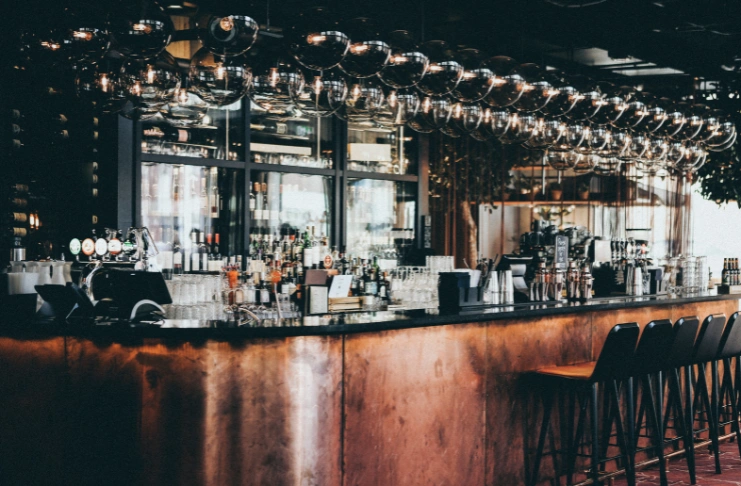Setting up a restaurant bar can significantly boost revenue and improve the overall dining experience. It’s known that restaurants with bars often generate higher profits compared to those without. A well-designed bar not only increases profitability but creates an engaging atmosphere for guests. This guide will walk you through the steps of restaurant bar construction and restaurant bar design , from planning to execution, ensuring you build a space that drives customer satisfaction and long-term profitability.
Planning Your Restaurant Bar
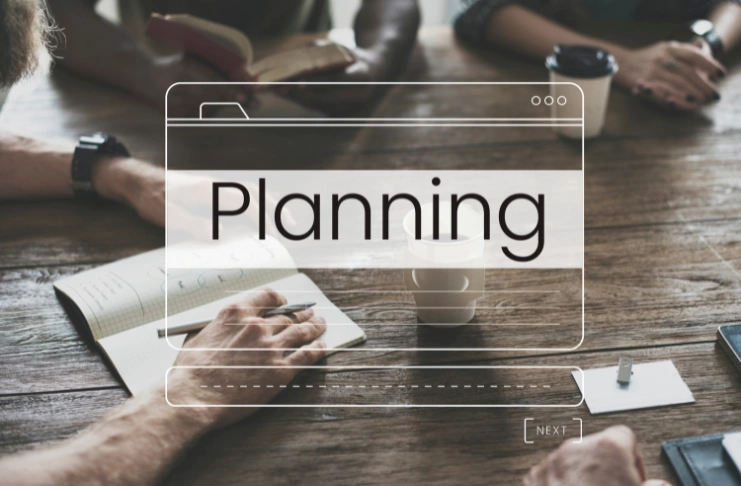
Determining Your Bar Concept
Your restaurant bar setup should align with your restaurant’s theme while offering a unique experience.
Understanding Legal Requirements
Before diving into your restaurant bar setup, familiarize yourself with:
- Liquor licensing: Required for any bar setup for a restaurant. Costs vary by state, starting from $125—depending on license type and availability.
- Health department regulations: Essential for sanitation, food safety, and compliance. Violations can lead to fines or closures.
- Building codes and permits: Ensure your restaurant bar construction follows fire, plumbing, and structural codes. Permits are often mandatory.
- Insurance requirements: Protect your business with liquor liability and general coverage. Crucial for any bar setup ideas for a restaurant.
Compliance costs for a restaurant bar setup vary by location and complexity, with non-compliance penalties including fines, legal fees, and potential shutdowns.
Creating a Budget
The cost of building a restaurant bar varies widely:
- Basic bar setup: Costs around $15,000–$30,000 and covers basic construction, essential equipment, limited inventory, and initial licensing for a simple restaurant bar setup.
- Mid-range bar: Costs range between $30,000–$75,000 and include upgraded equipment, better decor, more inventory, and full staff—ideal for a strong bar setup for a restaurant.
- High-end bar: Costs around $75,000–$200,000+, and has premium finishes, top-shelf inventory, and expert staff—great for upscale bar setup ideas for a restaurant.
No matter your budget, planning your restaurant bar setup with clear goals and cost awareness ensures a smoother launch and long-term success in a competitive dining and nightlife market.
Designing Your Bar Layout
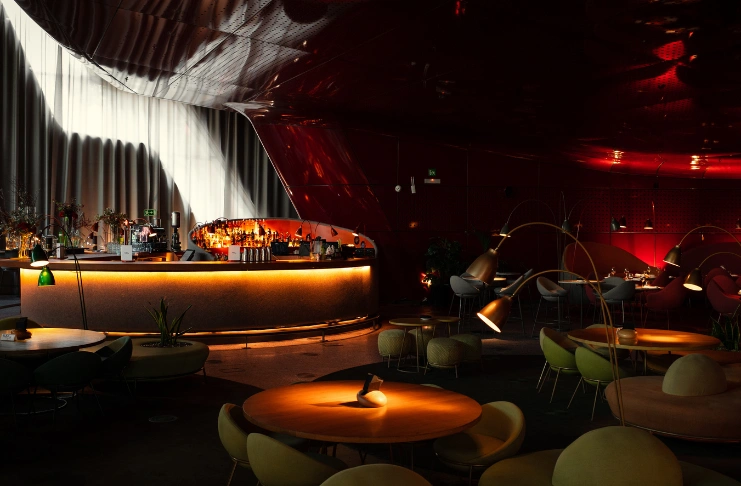
An efficient layout maximizes service flow in the bar area, increasing guest comfort and profitability.
Space Allocation
Allocate 5-10% of your total space to the bar. Industry standards recommend 18–24 inches of bar space per customer. Allow at least 3 feet of clearance for staff to ensure smooth service.
Bar Placement Options
Consider these positions for your restaurant bar:
- Front Entrance Bar: Creates an immediate atmosphere.
- Side Wall Bar: Maximizes seating capacity.
- Center Bar: Serves as a focal point, enhancing the dining experience.
- Back Wall Bar: Separates dining and drinking areas, improving flow.
Bar Setup Ideas for Restaurant Ambiance
Create a memorable bar atmosphere with:
- 10-15 foot-candles of lighting.
- A mix of high-tops, booths, and bar stools.
- Design elements that complement your restaurant’s theme.
EXPERT INSIGHTS
| Experts emphasize that a visually engaging interior design, especially one that appeals to younger, “Instagrammable” trends, can strengthen a bar’s brand, boost customer visits, and justify higher pricing. |
Essential Bar Equipment
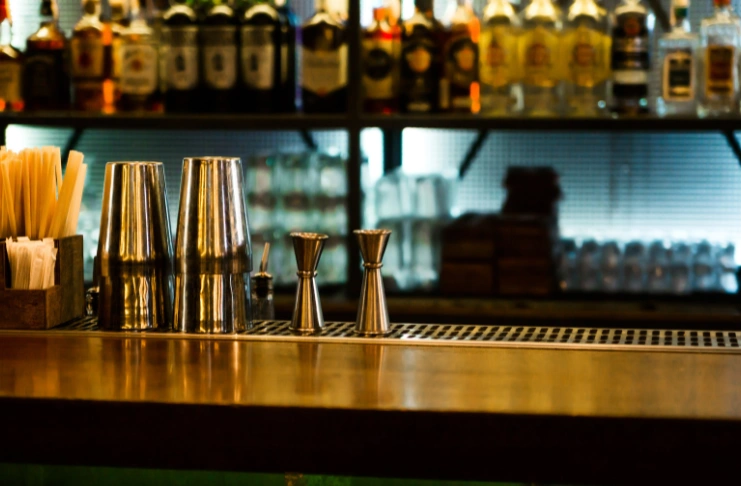
Outfitting your bar with the right equipment, like glassware, mixers, etc., is crucial for smooth operations, quick service, and delivering top-notch drinks consistently.
Bar Construction Basics
Your restaurant bar setup includes:
- Bar die
- Bar top
- Foot rail
- Speed rail for frequently used liquors
- Glass storage racks
Refrigeration and Storage
Essential cooling equipment includes:
- Back bar coolers
- Under-counter refrigerators
- Ice bins and machines
- Wine coolers, if applicable
Dispensing Systems
For efficient service, consider:
- Beer taps and keg systems
- Soda guns and mixers
- Wine preservation systems
- POS integration
A well-thought-out restaurant bar setup ensures smooth operations and enhances the overall guest experience, making it a cornerstone of your restaurant’s success.
Stocking Your Bar
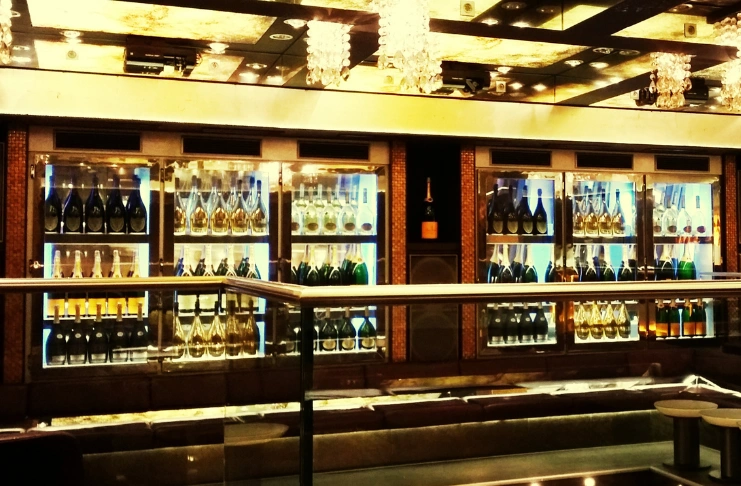
Properly stocking your bar ensures you have everything needed to craft a diverse menu of drinks while keeping operations running smoothly.
Creating a Bar Menu
Your menu should balance:
- Signature cocktails
- Wine selections
- Beer options
- Non-alcoholic alternatives
Inventory Management Systems
Implement systems to track:
- Usage rates and pars
- Cost of goods sold
- Wastage
- Vendor relationships
Smart menu planning and tight inventory control are essential for maximizing profitability and consistency in any restaurant bar setup.
Staffing Your Bar
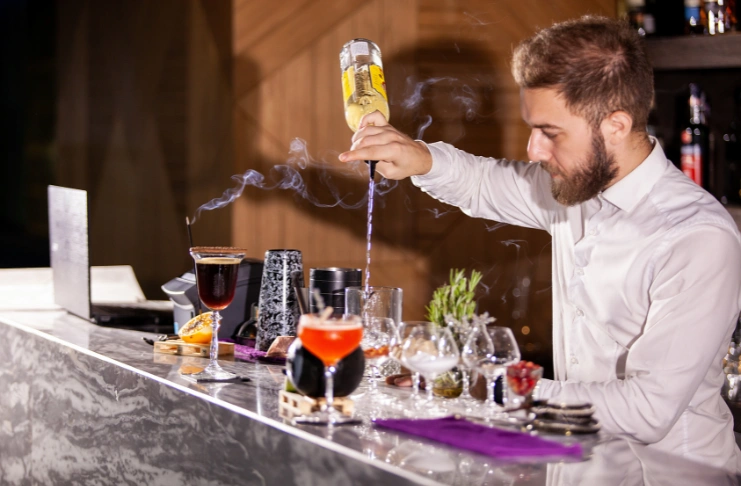
Effective bar staffing is essential for delivering excellent service, maintaining a smooth workflow, and enhancing the overall guest experience.
Hiring the Right Team
When learning how to set up a bar in a restaurant, remember that staff quality directly impacts success. Your team might include:
- Bar manager
- Bartenders
- Barbacks
- Cocktail servers
Training Programs
Comprehensive training should cover:
- Product knowledge
- Service standards
- POS operation
- Responsible alcohol service
Investing in the right team and training is key to a successful bar setup for restaurants, driving sales, and delivering a standout guest experience.
Operational Considerations
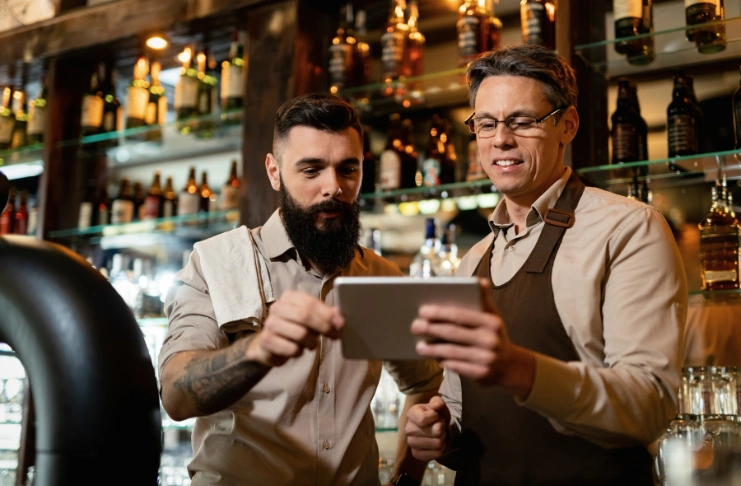
Focusing on key operational considerations ensures your bar runs efficiently, meets customer expectations, and remains profitable.
Setting Prices
When determining drink prices:
- Calculate pour costs
- Research competitor pricing
- Consider your target market
- Structure happy hour specials strategically
Creating Bar Policies
Establish clear policies for:
- Cash handling
- Inventory control
- Customer service standards
- Conflict resolution
Implementing Marketing Strategies
Promote your new bar with:
- Social media campaigns
- Happy hour specials
- Signature drink promotions
- Loyalty programs
Strong operational strategies ensure your restaurant bar setup runs smoothly, stays competitive, and consistently attracts and retains customers.
Maximizing Bar Profitability
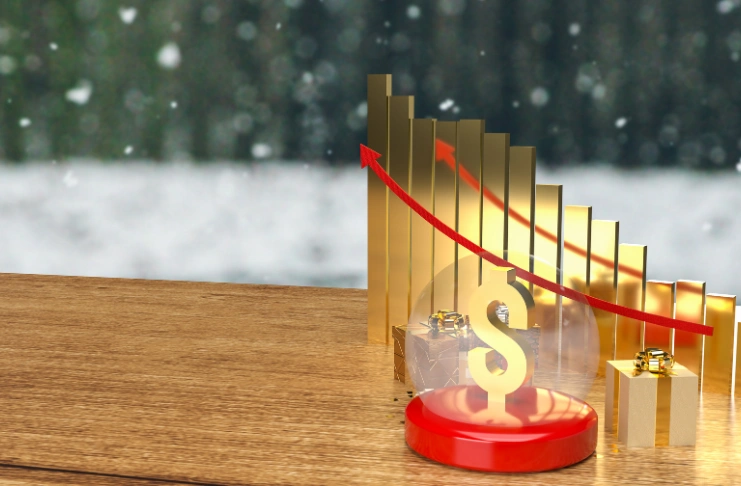
Maximizing bar profitability involves strategic pricing, smart inventory management, and delivering exceptional customer experiences to drive sales, which is essential for bar owners.
Controlling Costs
A successful bar setup for restaurants includes tight cost controls:
- Monitor pour costs weekly
- Track inventory variance (keep below 2%)
- Standardize recipes
- Train staff on portion control
Increasing Average Check Size
Boost revenue through:
- Upselling premium spirits, which can increase the check amount
- Suggesting food pairings
- Creating drink flights
- Offering tasting events
Monitoring Key Performance Indicators
Track these vital metrics:
- Pour cost percentage
- Labor cost should be targeted at 18-24%
- Sales per hour
- Customer satisfaction scores
Common Restaurant Bar Setup Challenges

Navigating common restaurant bar setup challenges helps you avoid costly mistakes and create a smooth, efficient bar operation from day one.
Space Limitations
For small spaces, optimize your restaurant bar setup with modular or portable bars, vertical storage, and a high-margin, limited inventory. Streamline your workflow to boost efficiency in tight layouts.
Budget Constraints
When funds are tight, phase your bar setup for restaurants, start with a focused menu, and lease equipment where possible. Prioritize items with quick ROI to build profitability early.
Balancing Bar and Restaurant Operations
Successful restaurant bar construction requires smooth coordination. Create separate workflows, maintain clear communication, and ensure POS integration to support consistent service standards.
Smart planning helps overcome setup challenges, making your restaurant bar setup efficient and profitable in any space or budget.
Final Considerations
Incorporate sustainability and technology into your bar setup to meet customer expectations.
- Implement waste reduction programs.
- Source local ingredients for freshness.
- Invest in eco-friendly equipment to reduce energy use.
- Minimize single-use plastics.
- Use digital inventory systems to track stock efficiently.
- Offer mobile ordering options for quicker service.
- Install automated pour systems for accurate service.
- Utilize CRM tools to personalize customer experiences.
Conclusion
A well-executed restaurant bar setup can increase revenue and enhance the customer experience. By focusing on concept, design, equipment, and operations, you’ll create a profitable bar that complements your restaurant. Successful bar setups require attention to detail, ongoing staff training, and adaptation to changing customer preferences. With proper planning and execution, your restaurant bar will become a cornerstone of your business success.
Frequently Asked Questions
1. What is a typical bar well set up?
A typical bar well setup includes liquor bottles, mixers, and tools for easy access behind the bar.
2. Is 100k enough to open a bar?
Yes, $100,000 can be enough to open a small to mid-sized bar, depending on location and concept.
3. What is the best layout for a bar?
The best layout often includes a center bar as a focal point or a side wall bar to maximize seating.
4. Do I need an LLC to open a bar?
An LLC is not required, but it is recommended for liability protection and tax benefits.
5. How profitable is owning a bar?
Bars typically have profit margins of 10-15%, making them moderately profitable depending on location and management.
6. What is required to open a bar in California?
You need a liquor license, health permits, building permits, and local zoning compliance in California.
7. How many licenses do you need to open a bar?
At least one liquor license and health permits are required, depending on your bar’s offerings.
8. How much does it cost to start a restaurant and bar?
Starting a restaurant and bar typically costs between $250,000 and $500,000.
9. How much does it cost to build a built-in bar?
A built-in bar typically costs between $5,000 and $20,000, depending on design and materials.
10. How to design a bar for a restaurant?
Focus on flow, functionality, and customer experience while ensuring enough space for staff and patrons.
11. How profitable is a bar restaurant?
A bar restaurant can be profitable with margins ranging from 5% to 15%, depending on the business model.
12. Is it cheaper to build a bar or buy one?
Buying a pre-built bar is usually cheaper than custom-building one due to design and construction costs.


